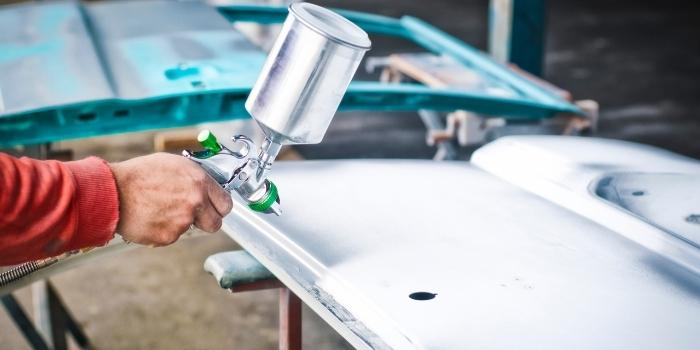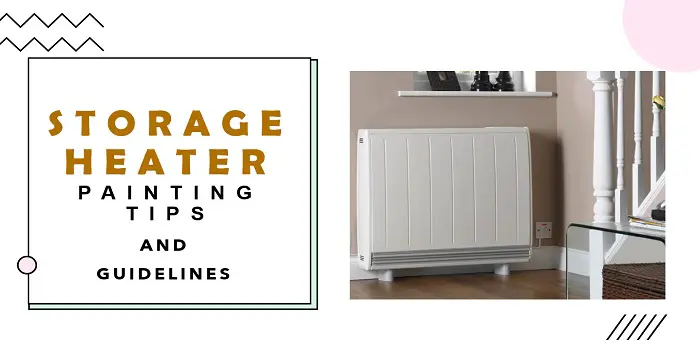
Like you have primers specifically for wood, metal, concrete, and other surfaces. There are also primers designed for the auto industry that can be used for prepping vehicles before you paint.
The question here is – can you use auto primer on wood? Also, will the primer meant for spraying cars stick well on surfaces like wood or walls if you use them?
The truth is that automotive primers are designed differently than regular base primers used on wood or walls prior to painting for better adhesion.
Since most of these primers are formulated to be used on metal or plastic surfaces, they are not recommended for spraying over wood, walls, concrete, or other such porous surfaces.
Plus, these automotive primers are more expensive than regular ones. So, unless you are applying the primer on metals or plastics, it’s good to use the primer that is designed for walls or wood.
What's Here in the Article:
What is Wood Primer?
Although it may look like paint, wood primer is composed of substances designed to help paint stick to the wood surface much better.
Plus, it contains ingredients that prevent the chipping and cracking of paint that has been applied over the primer.
Depending on the surface and budget, you can choose from various latex primers, oil-based primers, and shellac primers.
Some of the best advantages of applying the primer on the wood are…
1- Better Adhesion
Without primer, paint has a more difficult time sticking to the surface.
The result is that you must add more layers of paint.
This may become a problem when you need to repaint the surface over time as you peel away several layers of paint.
2- Moisture Protection
If you live in areas with high humidity, applying a primer to your exterior wall and wood surfaces can help a lot.
It will not only seal the surface but also add a moisture-repellent layer that will help prevent your walls from getting damaged due to continuous dampness.
This way, you can also avoid moss, fungus, algae, molds, and mildews from growing that usually thrive in high moisture and dampness.
3- Helps when Changing Colors
Just in case you plan to change the color of your plywood furniture, applying the first layer to a surface before painting can make your job much easier.
Especially when you are changing from bright colored to something softer, a good primer will help neutralize the base color.
Applying a base primer is also recommended when the old surface is already stained, you are changing the texture, or shifting from latex to oil-based paints (and vice versa).
This will also save you from applying multiple layers of topcoats, which can be otherwise very expensive.
4- Helps in Getting Smoother and Non-Porous Surface
When finishing porous surfaces (like new drywall and wood), a lot more paint can be absorbed if you apply the paint directly over them.
Plus, the overall application may seem to be uneven, sticky, and blotchy.
Using a primer will ensure that the gaps are filled, the rough surface becomes smooth, and you require a lesser amount of paint.
Other advantages of primer include the prevention of stains and making the cleaning of paint somewhat easier thanks to the resistance it provides to stains.
What are Automotive Primers?
Just as we have primers for walls, wooden furniture, decks, floors, etc, in our home, there are various kinds of car paint primers you can use as per your project needs.
Most of these auto primers are very thin and are designed to spray using a sprayer machine.
These types of automotive base primers (for cars, buses, trucks, RVs, motorcycles, and other vehicles) are essential to apply before painting to ensure high-quality and long-lasting auto paint jobs.
Depending on your project and type of metal surface, you may want to consider the types of automotive primers that include:
- Epoxy Primer – Good for preventing corrosion
- Polyester Primer – Good for small repairs and filling jobs
- Urethane Sealer –Serves as a strong adhesive layer that promotes paint adhesion
- Urethane Primer Surfacer – Good secondary base primer used along with putty or fillers
- Lacquer Primers/Sealers – Good for small bodywork jobs when used beneath a corrosion prevention paint layer

Why Should You Not Use Car Primers On Wood Furniture?
I’ve many times used automotive primers and paints on wood furniture.
And all I can say is – they worked pretty well and gave me great results!
Particularly if you want to achieve an ultra-high gloss coating on your finished cabinets, using car primer paint on your furniture can be a great option.
Plus, these automotive primers dry at lightning-fast speed, so you need not worry about the drying time if you are in a hurry and want to end up your DIY paint job fast.
With that being said, I am not trying to say that car paints and primers for furniture are the best options out there.
Since there are a few disadvantages to using them on wood, you should NOT consider buying an auto primer when you want to prep your wood surface.
Reasons why I wouldn’t recommend coating wood furniture and cabinets with auto primer paint are:
1- Car primers are very hard
Since car primers are very hard, they do not go well with the expansion and contraction of real wood.
In other words, wood furniture and cabinet panels can move too much (swell or shrink) with a change in temperature and other climatic conditions.
And because auto primers can’t resist these movements, they will crack easily.
2- They cannot be brushed
Most auto primers and paints will require a professional-level sprayer machine for spraying – because they are not designed to be used with a paintbrush or a roller.
Also, the spray gun you choose to apply auto primer should be powerful enough so that it can deliver the material evenly on the surface.
3- They are very thin
Most primers designed for prepping vehicles like cars and trucks have a runnier consistency.
This means if you use them in your home for your cabinets or other furniture items (in your basement, garage, etc.), you will need to apply several thin coats in order to achieve the coverage and finish you desire.
Also, if you already have varnish, stain, laminate, or veneer on your cabinets, automotive primer paints would not adhere very well to them.
4- They are more toxic
Car primers and paints are usually loaded up with chemicals that release dangerous fumes when sprayed.
So, when applying them on real wood surfaces, you will need to use proper respirators, gloves, eye protection, and other protective gear, along with good ventilation.
5- They can be very expensive
Auto primer paint is costly when compared to regular wood primers.
So if your job is to repurpose old cabinets and prep them before painting under a low budget, these car primers are not your best options.
What if You Have Automotive Primer as the Only Available Option?
If you have leftover automotive paint or primer in your garage, I know it’s tempting not to invest in new paint supplies.
If you wish, you can use them for your old furniture and cabinets, provided you take all the safety precautions.
IMO, it’s best to use them for your old cabinetry in the basement or garage rather than applying it to the kitchen, bathroom, or bedroom furniture.
Also, make sure you apply the automotive primer and paint in a large ventilated space when the children or pets are not nearby.
- Start by sanding your wood cabinets using a rough sandpaper
- This will remove any previous coating and prepare the surface for better adhesion
- Now wipe with a damp cloth to remove the dust and dirt
- Tape off the edges with painter’s tape and then spray the auto primer or paint
- Allow a few hours to dry, and then remove the painter’s tape from the edges
Final Thoughts
Choosing the right primer for the paint job will help you create a proper, professional finish to your work.
Plus, when you choose the right primer, it offers immediate benefits like helping to protect the underlying material and, at the same time, ensuring that the paint sticks properly to the surface.
Using an auto primer on wood furniture can be totally fine if the above problems don’t bother your project.
But if your project requires a top-quality professional finish, it’s good to use wood primers on wood and automotive primers on vehicles.

Douglas Becker (aka Painter Doug) has over twenty years of experience as a painter in Adkins, Texas. At present, he resides in Florida with his family.
From painting multi-storeyed houses, condos, and apartments to large commercial buildings and small offices, he had served various customers in areas not only in Adkins but also in Southwest Florida, Sarasota, Naples, and many more. To know more about him check here.




